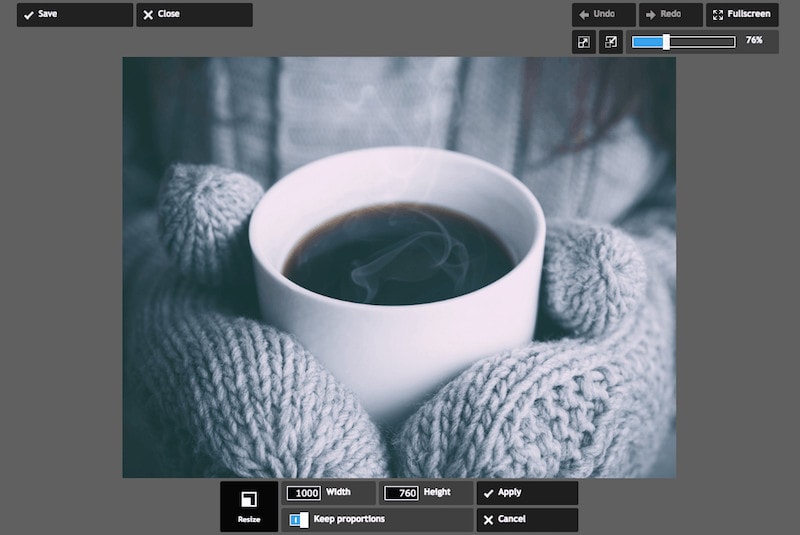

This unique compression feature allows JPEG files to be used widely on the Internet ,Computers, and Mobile Devices. Users can adjust the compression level to achieve the desired quality level while at the same time reduce the storage size. JPEG stands for "Joint Photographic Expert Group Image File", A JPEG is a type of image format that is saved using the method of lossy compression.
PHOTO SIZE OPTIMIZER DOWNLOAD
Once the Image is compressed, You can download compressed jpeg image, by clicking download button. You just need to Choose an image you want to compress and its size will be reduced to you specified size or less than you specified size automatically once you click on press Compress button. It’s a simple and easy way to reduce jpeg image size in kb or mb and then download.
PHOTO SIZE OPTIMIZER FREE
Select your preferred format then click Save.This online free tool allows you to compress JPEG in KB online. Adjust the width and height of the image and move the “optimize” button according to your desired level. Once you know the new dimensions and format that your photo needs for your site, go to the Optimize option and upload your photo. Simply download the app from the Chrome Web Store or go to Resizing.app home page and optimize images online right in your browser. Make the Resizing.app your all-around image optimizer.
PHOTO SIZE OPTIMIZER HOW TO
How to Optimize Images Using Resizing.app Consume less storage space on your server.Use less bandwidth, something that networks and browsers will be grateful for.Reduce your bounce rate, or the percentage of visitors who enter your site then leave.Raise your web conversions, or the desired action from your visitors such as making a purchase and registering with your site.Boost your search engine optimization ranking.Making sure your images contribute to faster web page/website loading speed will: For instance, you can use “Close up view Jarrow Formulas” or “Whey Protein ingredients list.” Benefits of Optimizing Images Similar to the way you name your image files, use words to uniquely describe your product. Use “alt attributes” wisely.Īn alt (short for alternative) attribute is the text that appears when an image in your site fails to display due to a different reader used by your online visitor or a slow connection. Save your images with names such as 2012-Ford-Mustang-LX-Red.jpg instead of something nondescript like DCMIMAGE10.jpg. Use a plain and descriptive file name for your images. Lossy compression (JPG) is used for images containing a photograph or a natural scene with smooth color variations, while GIFs are used for animations. Use lossless compression (PNG format) for images with texts and simple shapes with few colors or sharp edges such as logos. This makes your images load much faster than the original image. Use apps like an online image optimizer to resize the dimensions of your images to what your website needs before uploading them or sending them to your browser. Do benchmarking.īefore you do anything, find out how long your site currently takes to load by using Pingdom, GTmetrics, or any other page speed performance checker.

This calls for image optimizing techniques to make sure you keep online visitors immersed in your content. Images are the second-highest contributor to web page size behind videos, making up as much as 64% of a website’s size. Several factors contribute to the weight or size, and therefore the speed, of a website: images, JavaScript, videos, fonts, ads, plug-ins, your web host, and content delivery network. This puts businesses at a disadvantage, with Amazon estimating that a second of load lag time translates to about USD1.6 billion in sales loss annually. The poll also showed that 85% of respondents’ landing pages operated slower than that at a 3G connection. While Google recommends a page loading speed of five seconds or less, results from an Unbounce survey revealed that visitors leave a webpage if they wait for over three seconds. Doing so improves your search results page (SERP) rankings in Google, Yahoo, Bing, and other search engines. You optimize images for web use by reducing images to the smallest file size possible without sacrificing quality, ensuring that the pages of your website load quickly. Website performance is more about accessibility and speed than the number of beautiful images, videos, and music you post on your site, and this is where optimizing images comes in. The extent to which your brand, product, or service becomes known and widely patronized by the online community highly depends on the performance of your website. Optimize Your Images for the Web with Resizing.app


 0 kommentar(er)
0 kommentar(er)
